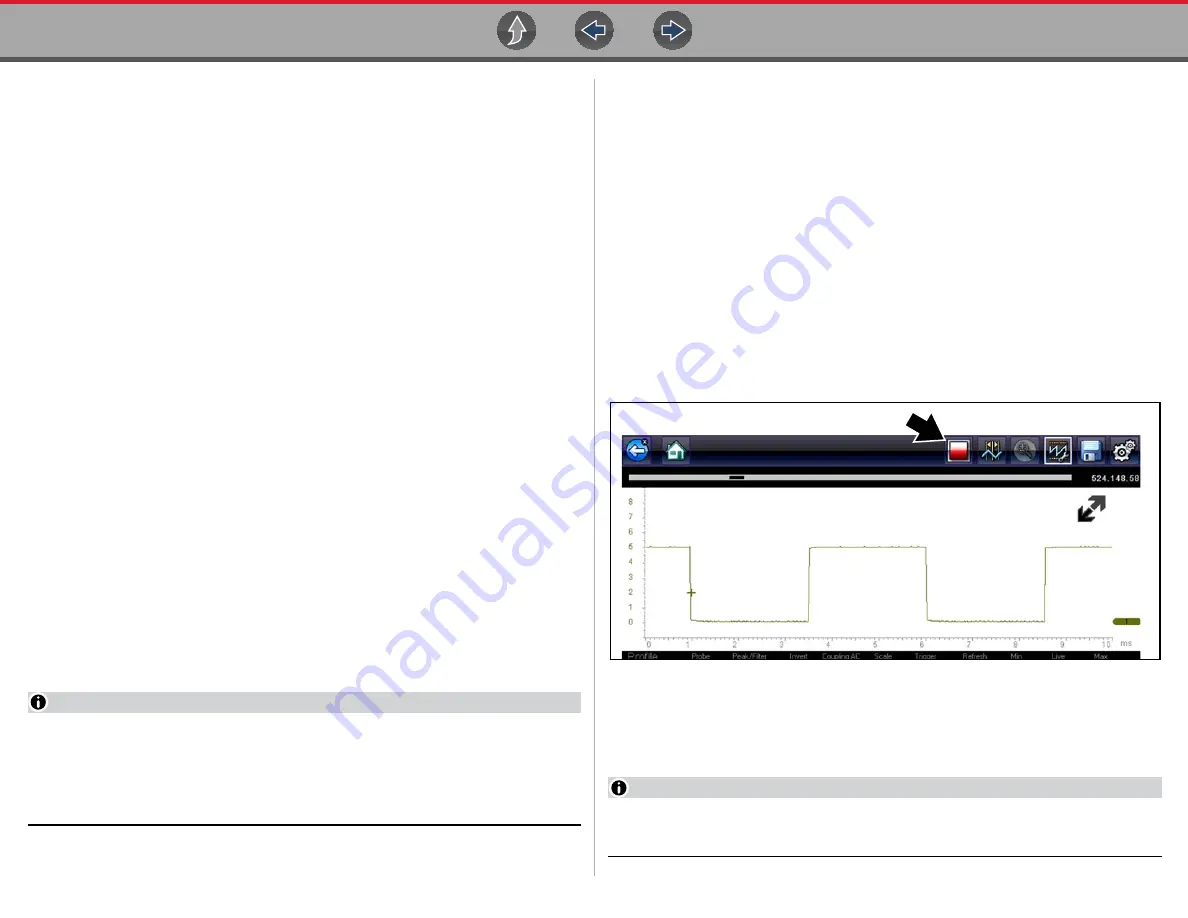
Scope / Multimeter
Capturing Data
34
As every testing situation is different, the following is provided only as a guide when
capturing data to provide the best flexibility when reviewing the data to find events.
In most situations if you start by using a sweep setting that is best suited for viewing
the waveform “live”, or at a setting that provides the best detail to the naked eye,
this will allow you to either see the event you are looking for “live, or allow you to use
the zoom feature (in Review Mode) to zoom out (2, 8, 32X etc.) and then search
through the data buffer for events of interest.
It is important to remember that whatever sweep setting you use during data
capture is what the 1X zoom level will be when you switch to Review Mode.
Therefore, if you capture data using a sweep setting where the pattern displayed is
tightly compacted (can’t visually see detail), then when you try to use zoom you will
not be able to see any detail, as you will only be able to zoom out from the setting
where you originally captured the data (displaying an even greater level of
compacted data).
In other situations you may need to start at a faster sweep (shorter time) to capture
more detail “live”, then zoom out (in Review Mode) to get a wider view and then
zoom in at the points of interest where you need more detail. Using this strategy you
will capture less total time, but be able to see more detail.
For some situations, if the sweep setting you are using is not fast enough to capture
the event your looking for, turning Peak Detect on will increase the sample rate and
may allow you to see the event.
Using peak detect can also help in avoiding aliasing if the sweep time is too great
for the waveform being captured. Using peak detect is not appropriate for every
instance, but when using longer sweep settings, it can help increase the capture
time by allowing you to capture more than you could without it and still capture
dropouts and points of interest. See
For additional information on setup and capturing data (input signals) see
.
NOTE
Glitches may cause drivability problems and may not turn on the MIL or set
DTCs. As a general guide when looking for a suspected signal glitch, always
try to verify the problem by duplicating the conditions while capturing data.
Utilize the GMM to monitor the signal over longer time periods and review the
histogram for possible faults.
3.10.3 Pausing Data
Data continuously stores in buffer memory until the
Pause
icon is selected.
Selecting the
Pause
icon, allows you to temporarily pause the data (input test
signal) to review it in detail. See
Reviewing Data and Using Zoom (Review Mode)
To resume data capture, select the
Start
icon.
3.10.4 Reviewing Data and Using Zoom (Review Mode)
For control icon descriptions, see
Scope Multimeter Control Icons
.
Review Mode allows you to search through the captured data in detail to find events
of interest, such as glitches and signal losses.
Press the
Pause
icon (
) to open Review Mode.
Figure 3-34
To search through the captured data, select the desired control icon to move
forward or backward through the data. The following control icons (
) are
active in Review Mode:
NOTE
You can also use the data buffer slider to quickly scroll through the captured
data in buffer memory.






























